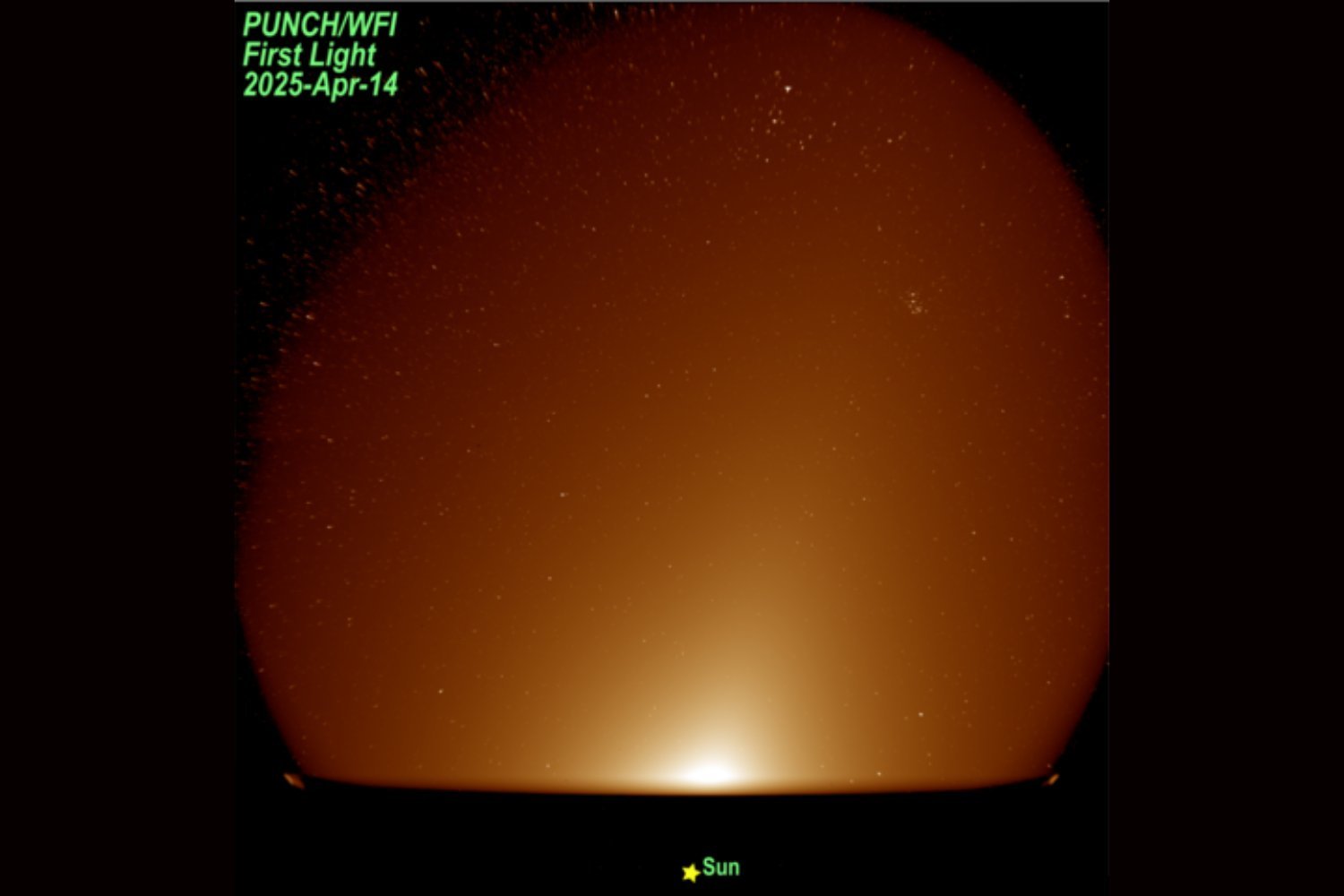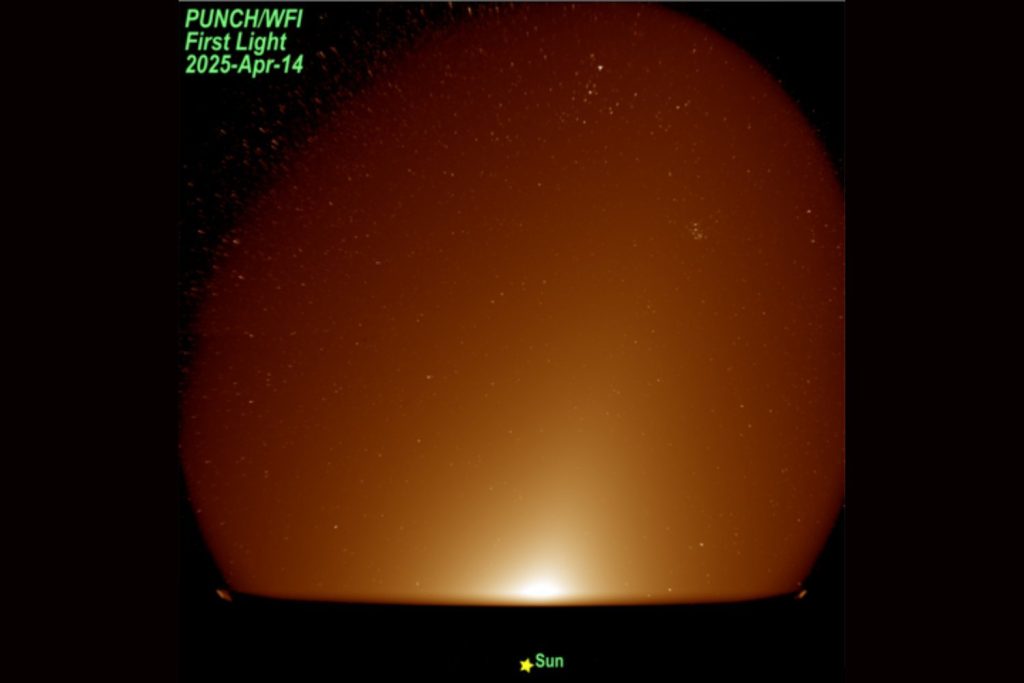Check out the vibrant first photo from PUNCH, a NASA mission that is hitting the ground running with some neat shots of the Sun.
PUNCH—short for the Polarimeter to Unify the Corona and Heliosphere—launched into low-Earth orbit last month, and its just taken its first images in what will hopefully be a fruitful period of scientific discovery.
PUNCH consists of four satellites orbiting each other in a constellation. The suitcase-sized instruments together comprise one, 8,000-mile-wide (12,900-kilometer-wide) space weather detector. PUNCH is charged with observing how the solar corona gives way to solar wind, the energetically charged particles from the Sun that cause auroras here on Earth.
After spending a few weeks getting their gear sorted, all four satellites have now opened their imaging doors. “All four instruments are functioning as designed,” said Craig DeForest, the mission’s principal investigator, in a Southwest Research Institute release. “We’re excited to finish on-orbit commissioning and get these cameras working together.”
PUNCH’s cameras—its coronagraph and imagers—are designed to observe the faintest edges of the solar corona and the solar wind, features on the periphery of our host star that are extremely difficult to spot given the Sun’s brightness.
The solar wind streams out of the Sun at more than one million miles per hour (1.61 million kilometers per hour), and its features are less than 0.1% as bright as the Milky Way. In its imaging process, PUNCH has to remove the light of distant stars, light reflecting off interplanetary dust, and your standard digital noise.
But that’s not all, folks. PUNCH’s rocket engines are the size of shot glasses and water-powered. The engines’ diminutive size is just enough to give PUNCH a kick of an inch per second (two centimeters per second), which is all the mission needs to keep the constellation in stable orbit.
“PUNCH is the first space mission to rely on this type of engine, which carries safe, inert, non-toxic propellant,” DeForest said. “That safety and stability are worth it even though the thrusters are more complex than conventional hydrazine rockets.”
This is merely the preamble to PUNCH’s big show. The spacecrafts are currently undergoing a 90-day commissioning period, and the science mission won’t begin until June. But the current steps are crucial for the team to ensure that PUNCH properly filters out all the light that would otherwise jeopardize its observation of the solar wind. The pleasantly soft glow in the top image—first light for the nascent spacecraft—is light glinting off the dust particles around the Sun.
PUNCH will help researchers stay prepared for solar wind—and solar storms—that blow energetic particles at our planet. Those storms can interfere with electronics on Earth, including the power grid, making it critical that scientists are kept up to date on the latest dynamics from the surface of our star.




